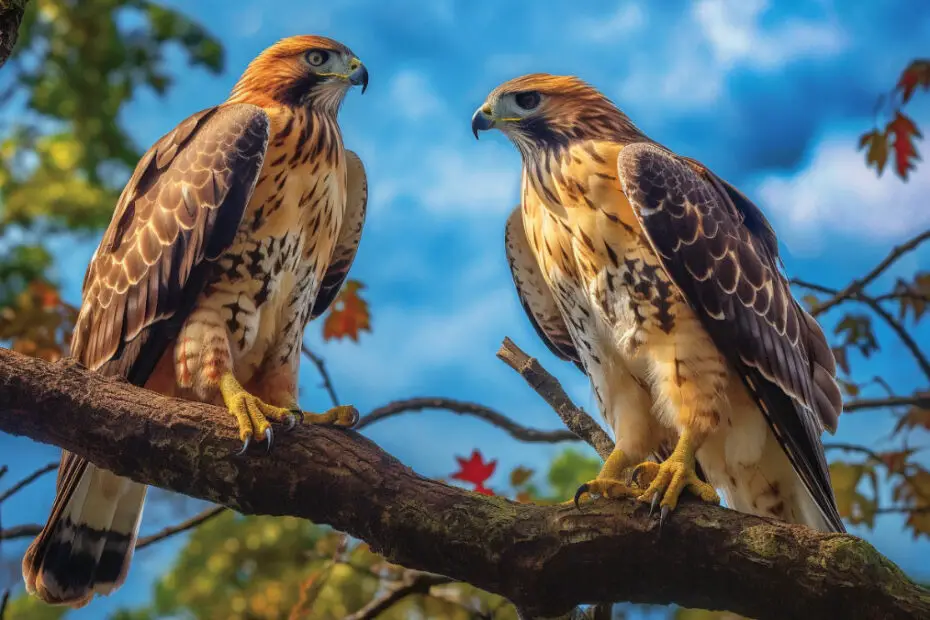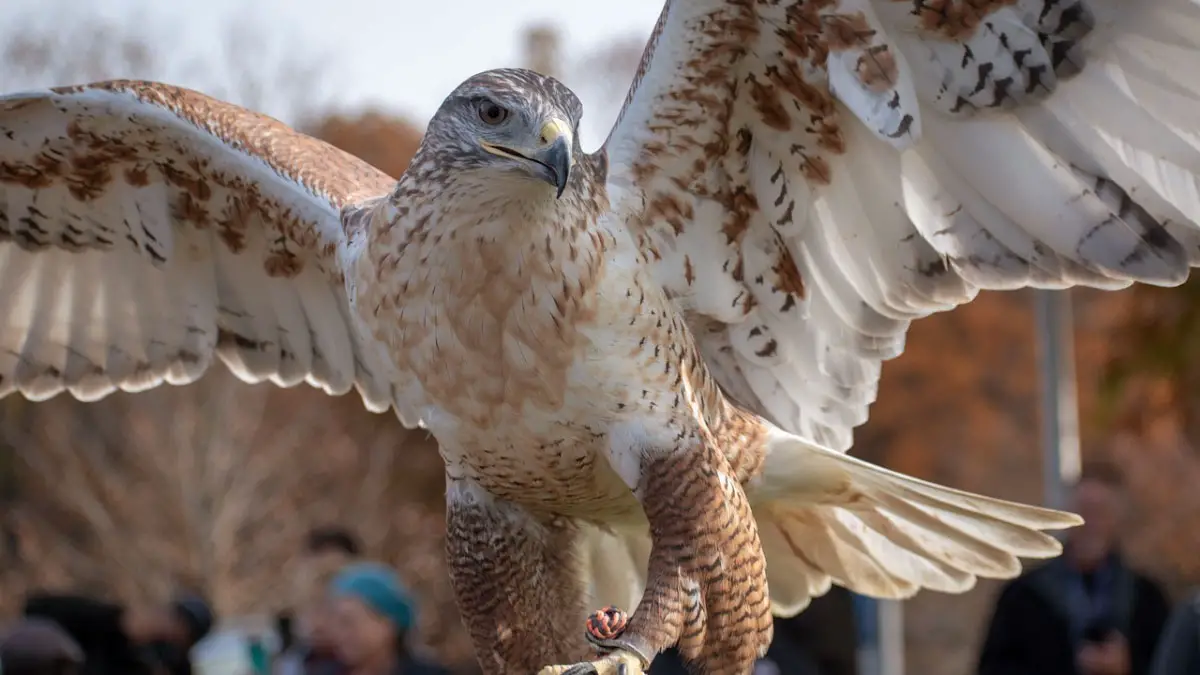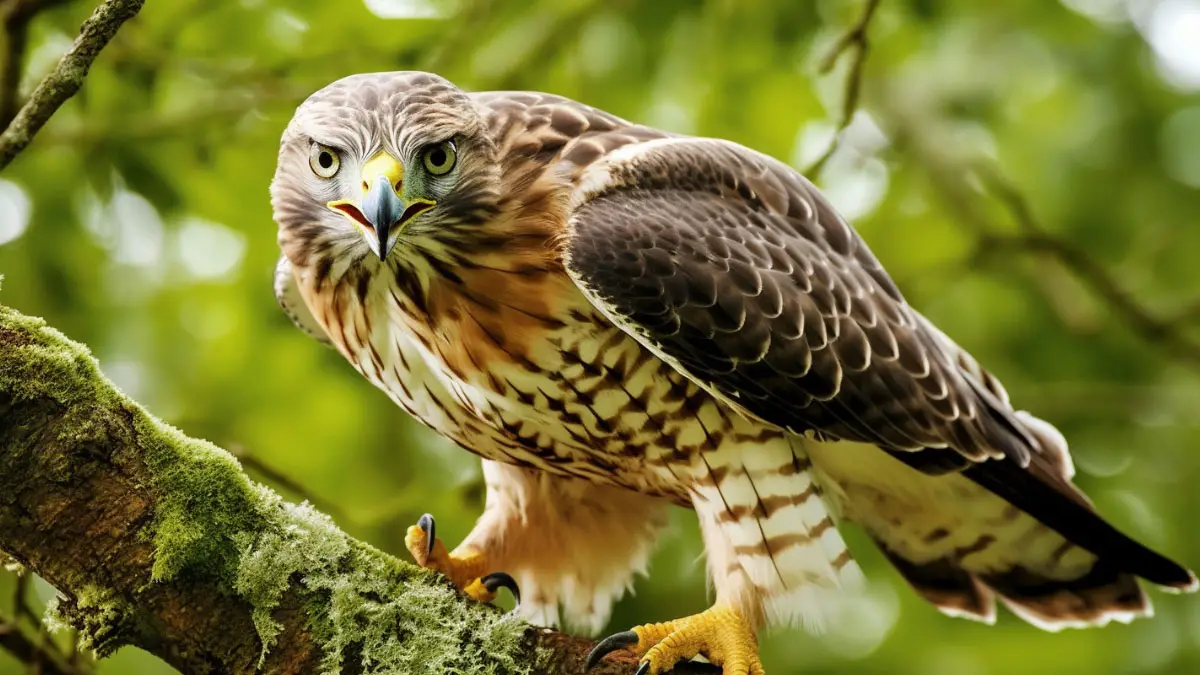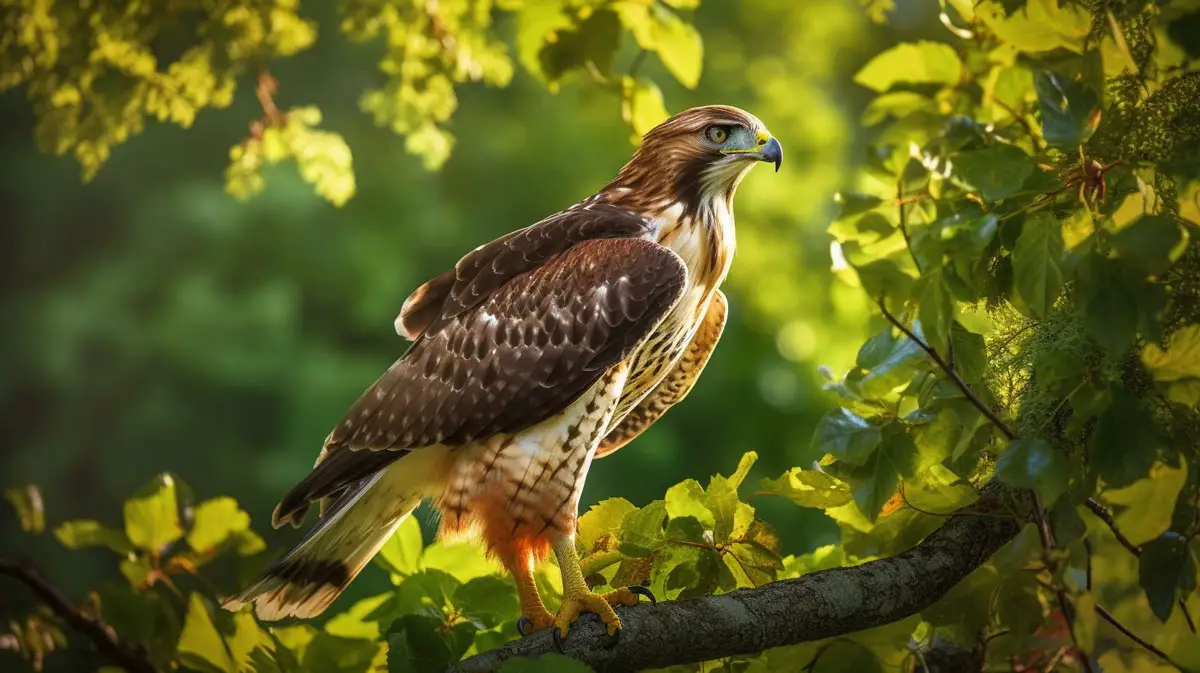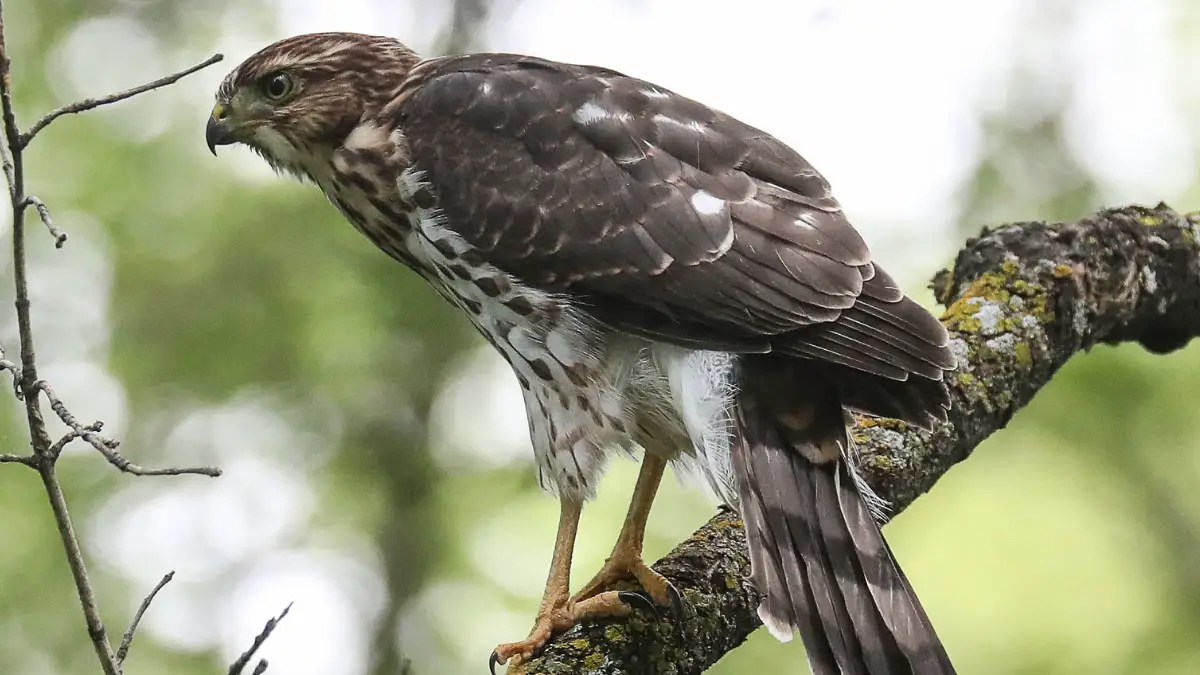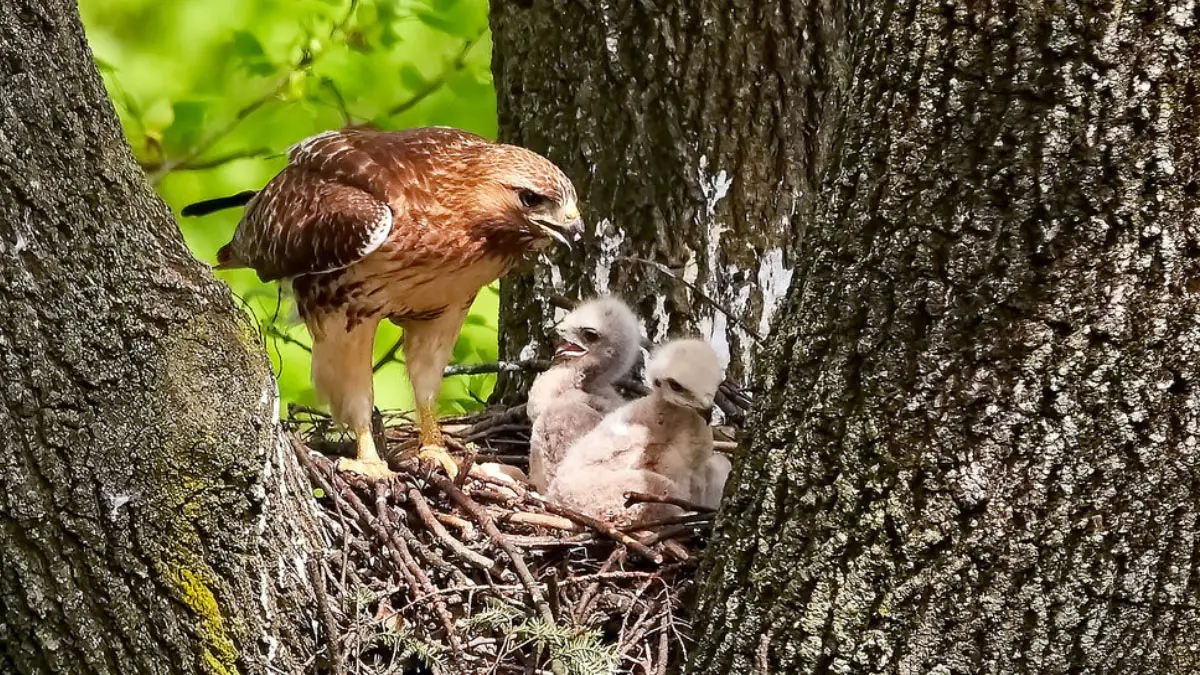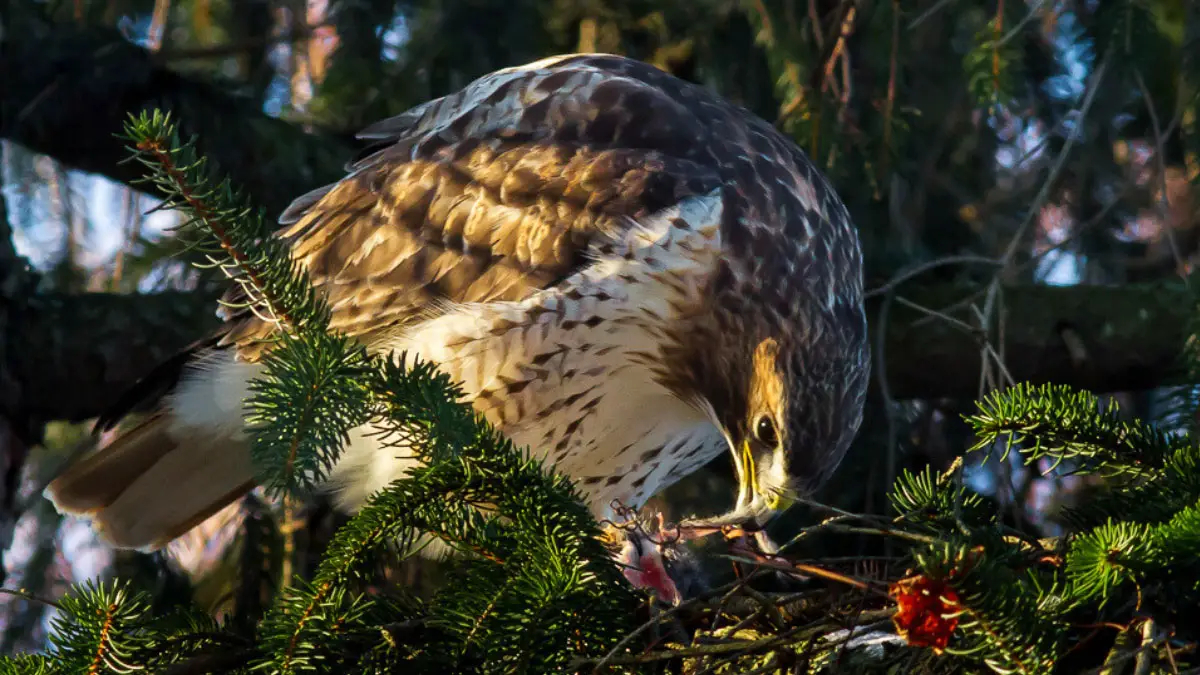A hawk is a small to medium-sized predator or bird of prey belonging to the Accipitridae family. But guess what? There exist over 200 hawk species, with the common ones being the Cooper’s, red-tailed, Swainson’s, Harris, Harrier, and northern goshawk.
As predators, the ecological role of these birds is to help control other animals’ populations by preying on them. They also serve as indicators of the ecosystem’s health.
So, because of the important ecological role they play, understanding their dietary needs is essential. This is because it helps ensure their survival and that of their food source. Also, it helps conservationists to develop better conservation strategies for these birds.
But what do hawks eat in the wild? Hawks’ diets consist of small mammals like rabbits, rodents like mice and voles, plus reptiles, such as lizards. These birds also feed on their feathered cousins and insects like grasshoppers and beetles.
Wait, it doesn’t stop there! In this guide about avian predation, we will also discuss the various strategies these birds use to hunt and their food preferences.
Hunting and Feeding Behaviors of Hawks
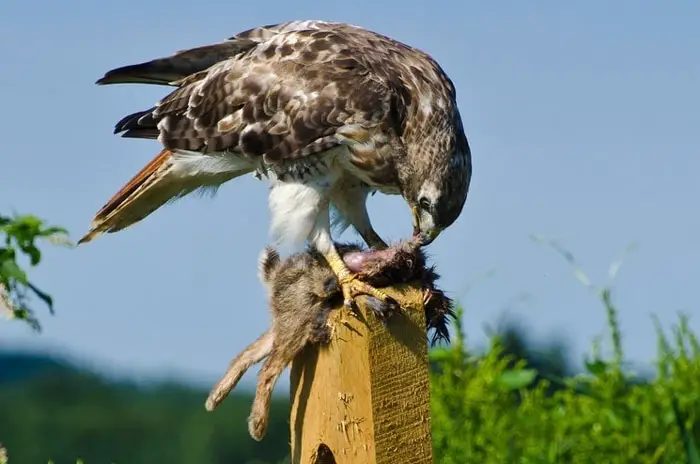
Among all the bird species, these predatory birds have one of the most impressive prey-attacking skills. They use a variety of hunting techniques that include the following:
Soaring
One of the common strategies is low or high soaring. Low soaring involves flying low to the ground and mostly in a straight line. This strategy is best suited in open habitats like meadows and relies more on the element of surprise. Generally, this technique is common among smaller hawk species like the sharp-shinned Harris hawk and northern harriers.
With high soaring, the hawk usually flies high into the sky, often circling on thermals. And once the hawk spots a potential prey, it dives at incredible speeds to catch it. However, unlike low soaring, high soaring is best suited for large hawk species like the red-tailed and Ferruginous hawk.
Perching
With the perching technique, the hawk often settles on a high tree branch or any other elevated location. The bird can rest on the branch for long periods waiting for potential prey. And once it spots the prey, you will see it swoop down to catch it.
Generally, this strategy is common in backyard homestead habitats. The birds usually target small animals like chickens.
Stooping
Like high soaring, hawk species using this technique often fly at high altitudes while circling thermal currents. And after spotting the prey, they dive down at fast speeds to catch it.
During the stoop, the bird usually folds its wings and tucks its feet close to the body. This helps minimize drag and increase speed. But as the bird approaches its catch, it straightens its wings and sticks out its talons forward to grasp it. It then flies away.
Adaptations for Hunting and Capturing Prey
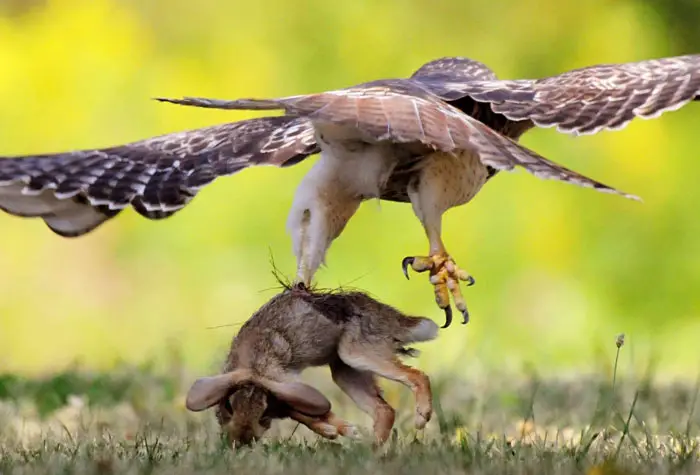
All hawk species have several hunting adaptations that enable them to be successful predators. Here are some examples:
Sharp Talons
These raptors have four toes on each foot, with three forward-pointing talons and one long talon pointing backward. The tip of the talons is as sharp as a dagger for ease of penetrating their catch.
Hooked Beaks
Besides the talons, these birds have a sharp and hook-shaped beak adapted for tearing the prey apart. The beak is also sharp enough to pierce and kill their catch, as well as pluck out feathers.
Keen Eyesight
Additionally, these carnivorous birds have sharp eyesight, allowing them to spot prey from a distance. Their vision is 4 to 5 times sharper than that of humans. In addition, they can see in color.
How Hawks Kill Their Prey
Typically, hawks use their sharp talons and hooked beaks to kill their catch. Once the hawk identifies a target, it swoops down on it, striking it with its sharp claws. The talons usually penetrate deep into the target’s body, immobilizing or killing it immediately.
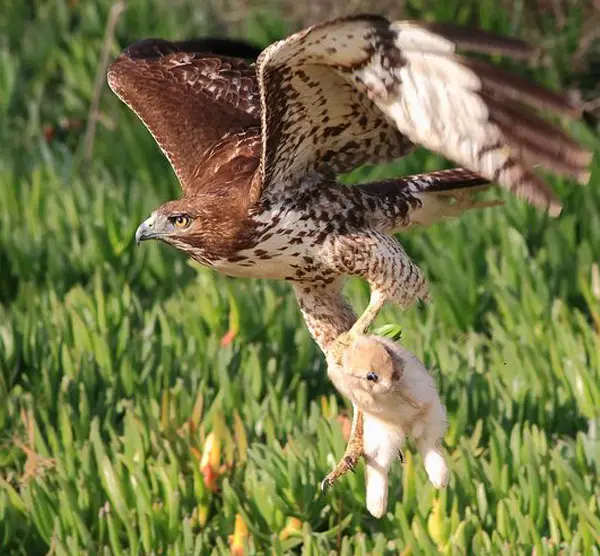
In some cases, the hawk may decide to eat its catch alive. In such a case, the bird usually uses its hooked beak to rip apart the prey, killing it slowly. It may also bite down on its neck, breaking it.
However, sometimes the prey may die due to lack of air. This happens when the hawk grasps its target tightly with its strong tendons, constricting its airflow.
Factors that Influence Hawk Hunting Behaviors
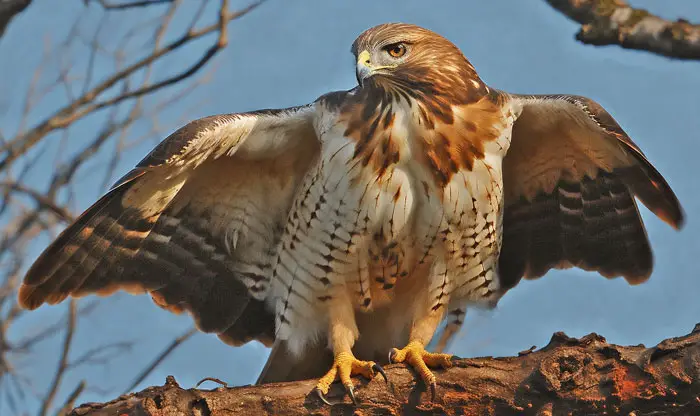
Hawk hunting behaviors may vary based on several factors. These include:
Prey Abundance
Generally, a hawk will hunt in places where there is an abundance of prey that is easily accessible. These include open fields and desserts.
Weather Conditions
Changes in weather conditions may also influence how this predatory bird hunts. For example, if the winds are strong, they may choose to hunt by perching instead of high soaring.
Feeding Behaviors of Hawks
Similar to the preying behavior, a hawk’s feeding behavior may vary in many ways. These ways include the following:
Feeding Frequency
Some hawk species, including the sharp-shinned hawk and American Kestrel, usually hunt and consume food daily. These species can eat one large meal or multiple small ones throughout the day. Other species like the Harris’ hawk consume a single large meal every few days.
Food Caching
When they have an excess kill, these birds usually store it away from the sight of other predators for later consumption. This bird behavior comes in handy during times when food is scarce.
Prey of Common Hawk Species
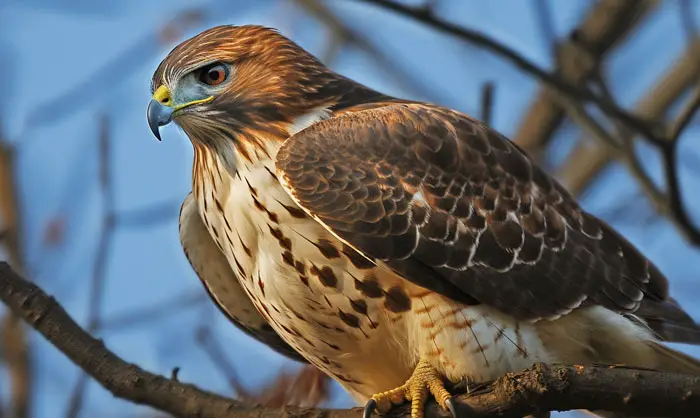
Generally, most of these birds prefer preying on smaller animals than them, like birds, reptiles, insects, and amphibians. They also eat fish in shallow waters and small mammals like rabbits and hares.
Detailed Descriptions of Common Hawk Prey Items
Now, let’s find out the common hawk food items in detail, including the types of reptiles, birds, and rodents they eat.
- Rodents: Rodents, the largest order of mammals, are the primary prey of common hawk species. These include mice, ground squirrels, chipmunks, voles, rats, and gophers. But overall, they prefer eating mice as they are more nutritious.
- Reptiles: These birds of prey also feed on reptiles like snakes, iguanas, and lizards. Lizards inhabit most of the landmasses, making them a common food for these birds. Unfortunately, they sometimes succumb to venomous snake bites.
- Birds: Additionally, these aerial predators also feed on their feathered cousins, such as songbirds, hummingbirds, and waterfowl. Sparrows, doves, pigeons, crows, finches, ducks, hens, quails, and ravens are also on their menu list.
- Insects: Baby hawk species usually eat insects like grasshoppers, moths, crickets, dragonflies, and beetles. Insects are also a common food for hawk species like the Swainson’s hawks when they are not breeding.
Seasonal Variations in Hawk Diets
A hawk is an opportunistic hunter. Therefore, its diet often varies based on the time of the year. For example, they tend to hunt for birds during the spring season.
This is because most birds usually breed at this time, making them more abundant. The birds also tend to be more vulnerable as they care for their young ones.
But during winter, these predators often rely on smaller rodents since food is limited. Some hawk species may even feed on other animals’ carcasses. Conversely, during summer, they eat nearly everything since food is usually in abundance.
Comparison of Hawk Diets with Those of Related Species
The Hawks belong to the Accipitridae family. The family comprises eagles, buzzards, harriers, Old World vultures, and kites. Therefore, their dietary preferences are similar.
- Eagles: Unlike hawk species, eagles feed primarily on medium-sized birds and mammals. However, some eagle species, like the Golden eagle, also eat reptiles, fish, rodents, and large insects. Also, eagles scavenge more on carrion than a hawk.
- Red Kites: On the other hand, red kites are mainly scavengers, mostly feeding on dead animals. They also eat small mammals, birds, reptiles, and invertebrates like earthworms. This is because, compared to the rest of the species in the Accipitridae family, they are not good hunters.
- Old World Vulture: Like kites, Old World Vultures also feed mostly from the carcasses of dead animals. Conversely, the harriers and buzzards have the same menu as hawk species.
Factors That Influence Hawk Food Preferences
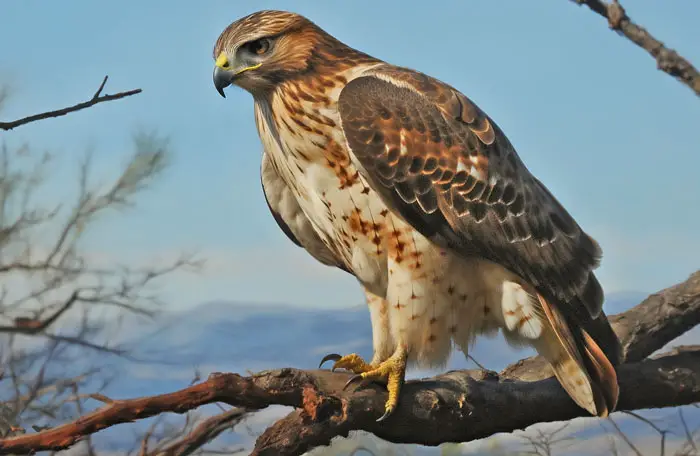
While these predators usually eat anything available, certain factors tend to influence their food preferences. They are as follows:
Prey Size
Generally, these birds hunt for small or equal-sized animals. However, this varies based on the size of the hawk. For instance, baby birds usually hunt for small insects, while larger birds, like the red-tailed hawk, hunt for bigger animals like rabbits.
Habitat
The food preferences of hawks also vary depending on the habitat they are in. Generally, these birds occupy a wide range of habitats, including montane grasslands, agricultural fields, scrub deserts, rainforests, wetlands, and rugged canyons.
However, species adapted to living near the wetlands primarily feed on fish. Conversely, species like Cooper’s hawk living in forested mountainous regions mostly feed on small mammals.
Why Hawks Prefer Certain Types of Prey Over Others
There are several reasons these birds may favor certain food items over others. The reasons are mentioned below.
Ease of Capture
These birds prefer feeding on small animals because they are easy to catch and kill. Besides, small animals cannot harm them.
Nutritional Value
Hawk species require a diet high in protein and fat for maximum muscle growth and energy levels. Therefore, these birds usually prefer animals rich in these two nutrients.
Do Hawks Have Favorite Prey Items?
Yes. However, these favorite items vary depending on the hawk species. For instance, the favorite prey item for the red-tailed hawk is small rodents like mice. This is because, unlike rats, mice have a higher fat and protein content.
Meanwhile, species like the sharp-shinned and Cooper’s hawk feed mostly on small to medium-sized birds like robins, doves, and woodpeckers. Harris hawk species also love eating medium-sized mammals like rabbits.
How Hawk Food Preferences Affect Their Ecological Role
All hawk species are apex predators. Therefore, they play a critical role in the food web of most ecosystems as top predators. But how do their food preferences affect their ecological role?
Well, by selectively preying on specific animal species, these birds help regulate their populations by removing them from the food chain. This helps keep the animals in balance with their environment.
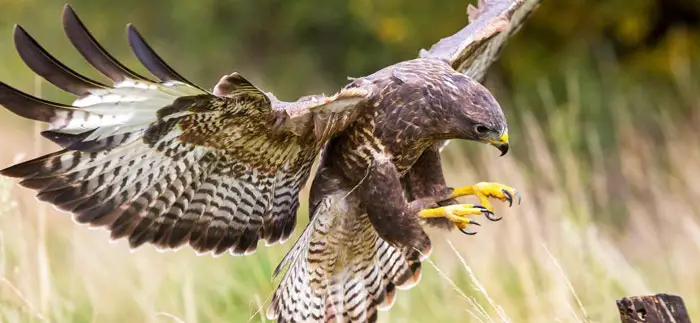
For example, by eating rodents which is their ecological niche, they help keep their populations in check. And through rodent control, this also helps regulate the population of predators that feed on rodents, like snakes.
Hawks As Indicators of Ecological Health
Being top predators, any changes in these birds’ diets can offer valuable information about the health of the ecosystems they inhabit. This explains the importance of studying hawk dietary needs.
For example, when these birds hunt animal species already under pressure from factors like habitat loss, their predation could worsen things. Simply, their predation on the same species may cause their further decline.
Consequently, this may affect the abundance and diversity of other animal species throughout the ecosystem.
How Changes In Hawk Diets Can Signal Changes in Prey Populations or Habitat Conditions
Generally, the hunting and feeding behaviors of hawks are influenced by food abundance. Sometimes, there may be an increase in the number of these birds preying on particular species like rodents. In this case, it means the particular species’ population has increased in the region.
However, if the hawk species suddenly switches to preying on other animal species, like birds, it could mean a decline in the rodent population.
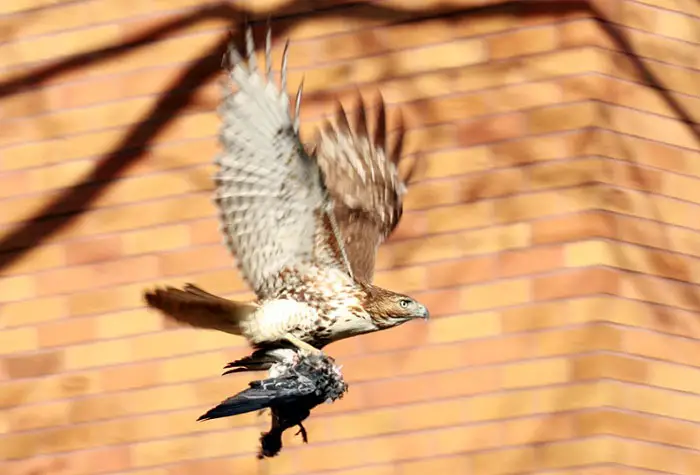
Additionally, changes in food preferences may also signal changes in their habitat conditions. This is because these predators are adapted to hunting and feeding on prey specifically available in their environment. So, once their preferred food becomes scarce, they are usually forced to shift to alternative prey. Consequently, this usually offers hints about changes in their habitat.
Example of Research that Has Used Hawk Diets as an Ecological Indicator
One example is a journal article published by the Association for Tropical Biology and Conservation in 1988. The research focuses on the dietary needs of red-tailed hawk species. Based on the article, the birds living in the lowlands would mostly consume small mammals.
However, red-tailed species in the rain and cloud forests preyed mainly on reptiles, birds, and amphibians. They would capture them in closed-canopy forests. This is to mean the population of mammals in these regions is lower than in the lowlands.
FAQs
Before we conclude, let’s check out these commonly asked queries regarding the diet of different hawk species.
No. Their food varies based on species and their habitat despite all of them being carnivorous. For example, some species, like the Swainson’s Hawks, mainly consume invertebrates and insects. Conversely, the red-tailed hawk species mostly eat small mammals.
Yes. These predatory birds can eat the flesh of dead animals, also known as carrion when it is available. This is because, besides being predators, they are also opportunistic feeders.
This primarily depends on the hawk species, its size, and its age. But generally, these birds are required to eat about 12-15% of their body weight in a day.
Yes, but only when they feel threatened or when protecting their young ones. In this case, the birds may dive bomb or swoop down in an attempt to drive the humans away.
The obvious effect is a decline in hawk populations. This can be due to a decreased number of their food. For example, when people mostly hunt small mammals like rabbits.
Conclusion
When studying hawks’ food habits, it is critical that you also learn about how they hunt and their feeding behaviors. More so, their food preferences. This is because it is the only way you can understand better how they contribute to the ecosystem’s health.
Besides, understanding hawk dietary requirements has many implications for conservation and management efforts. For example, it can provide insight into what animal species are vulnerable to hawk predation. As a result, conservation efforts can be put in place to protect them.
Additionally, studying dietary preferences may help identify their potential threats. For instance, when a hawk species primarily relies on a particular food that is in decline, this could put hawk populations at risk.
With that said, more research is required on the topic of the wildlife ecology of these predatory birds. This is to help promote awareness of the role of hawk species and mitigate their conflicts with human activities.
